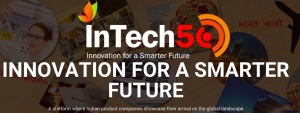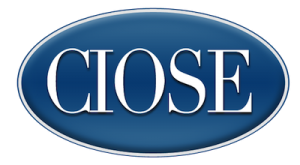Did you know that India is ranked as the fourth largest startup hub in the world with over 3,100 startups? According to the economic Survey 2014-15, the startup scene has been mainly driven by ‘hyper-growth’ in the technology startup and software product landscape. Owing to some great software product innovations of late, India is no more tagged merely as a technology service provider, but is also known for its innovations. Investors and big tech giants from across the world globe are acknowledging the tech startup momentum in India, thanks to initiatives like InTech50 which have given these companies a platform to showcase their products and potential to the world.
 A joint initiative of iSPIRT and Terrene Global Leadership Network, the InTech50 event was held at Bangalore on April 15th and 16th this year and received great acclaim from startups, investors and the industry in general. India’s ‘fantastic fifty’ innovative software product startups, that had made it to the finale, got a unique opportunity to interact closely with a panel of renowned CIOs/CTO’s and investors from across the globe, in this two-day action-packed event.
A joint initiative of iSPIRT and Terrene Global Leadership Network, the InTech50 event was held at Bangalore on April 15th and 16th this year and received great acclaim from startups, investors and the industry in general. India’s ‘fantastic fifty’ innovative software product startups, that had made it to the finale, got a unique opportunity to interact closely with a panel of renowned CIOs/CTO’s and investors from across the globe, in this two-day action-packed event.
‘Know-it-all’ before you hit the launch pad is the mantra at InTech50 and startups are made to do their homework quite well, before they meet the CIOs. In keeping with this, when the countdown for the event was on, Mr. NRK Raman, Co-Founder of iFlex, the man behind closing the famous USD 909 million iFlex acquisition deal with Oracle back in 2005, was instrumental in helping the startups fine-tune their pitch for investors so they could derive maximum value at the event and get a POC from the investors. To further complement the effort, the Business Catalyst Program that we had launched this year, helped in generating the required traction for these startups, a crucial step in ensuring their long-term success.
Overall, InTech50 lived up to its promise of connecting the startups with investors and CIOs of global repute so they could interact and explore synergies in their operations, thereby mutually benefitting in the process. The startups managed to forge ties with the right people in every field right from funding, product marketing to sales etc., which could not have been possible otherwise in such a short time frame, that too without spending a bomb. It is now the prerogative of these startups to convert these relationships into business opportunities and prove their mettle.
Here are some testimonials from the participants this year:
“InTech50 gave our small startup the opportunity to mingle with industry leaders and titans, something that we would never have dreamt of before!” – Kiran, Tydy
“Amazing effort by the iSPIRT team! Makes it possible for Indian innovators to get direct feedback and prospects from the global markets, which would otherwise entail a substantial financial investment.” – Eashwar, Uniken
“InTech50 was a wonderful platform to meet Global CIO’s, Indian CIO’s and ecosystem enablers. We received good interest from multiple companies and thank the team for putting together a flawlessly executed event. Thank you for being a strong enabler for the Indian product ecosystem.” – Sudarshan, RippleHire
“It’s a must for all startups looking for strategic consult, marketing support and media exposure to validate ideas, scale-up business or expand into Western markets. A great place where great products meet great people.” – Sumit Goswami, KeyPoint Technologies
“InTech50 is a well organised event giving product companies a good opportunity to interact with some of the top CIOs from India and US. Some of the CIOs also spent time with us discussing about our product roadmap and how we should prioritize some features for roll out.” – Tom, Talview
“InTech50 2015 was a super-useful event for Reverie. It helped us pitch better, position ourselves well, open business partnerships with some dream prospects, expand tech partnerships to enrich our Language Gateway, explore sales channel alliances, and above all, build some great relationships.” – Dheeraj, Reverie
Please note that we intend to continue the process of mentoring and advising the companies, even after the conclusion of the event.
Feel free to reach out to us …







